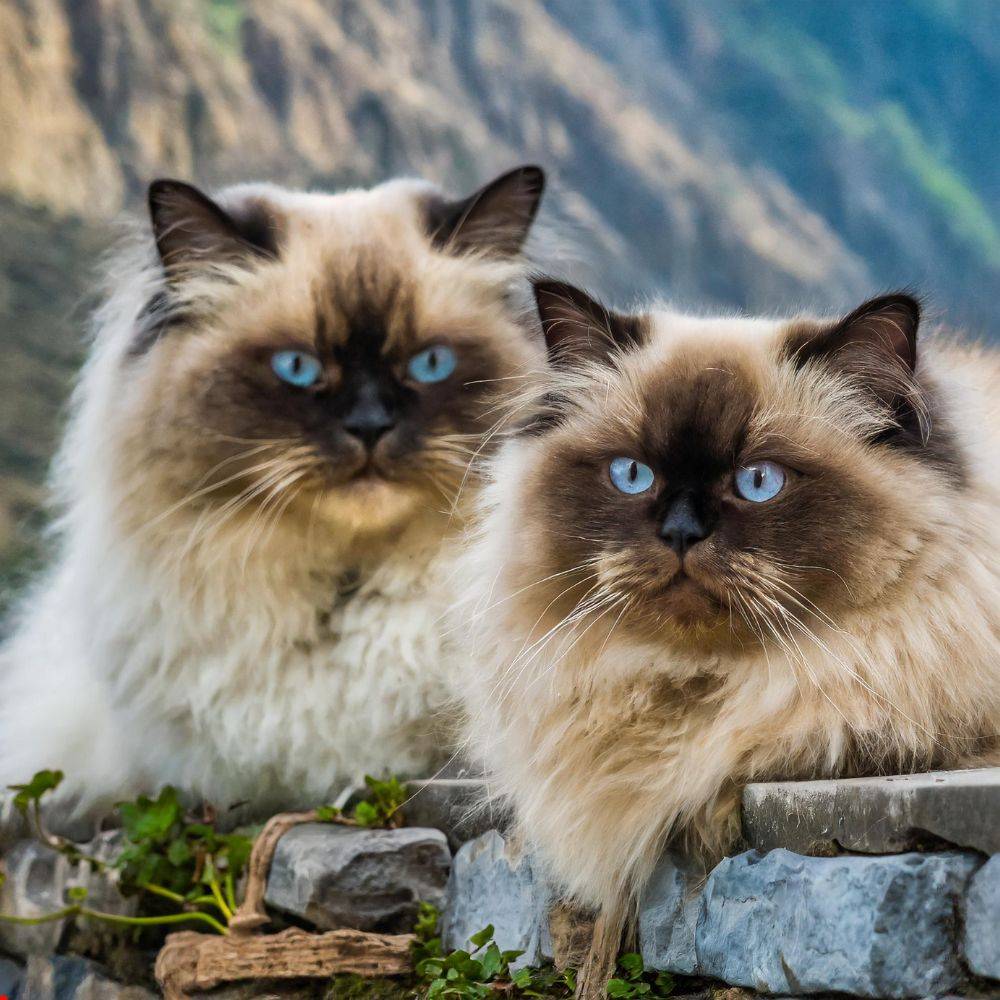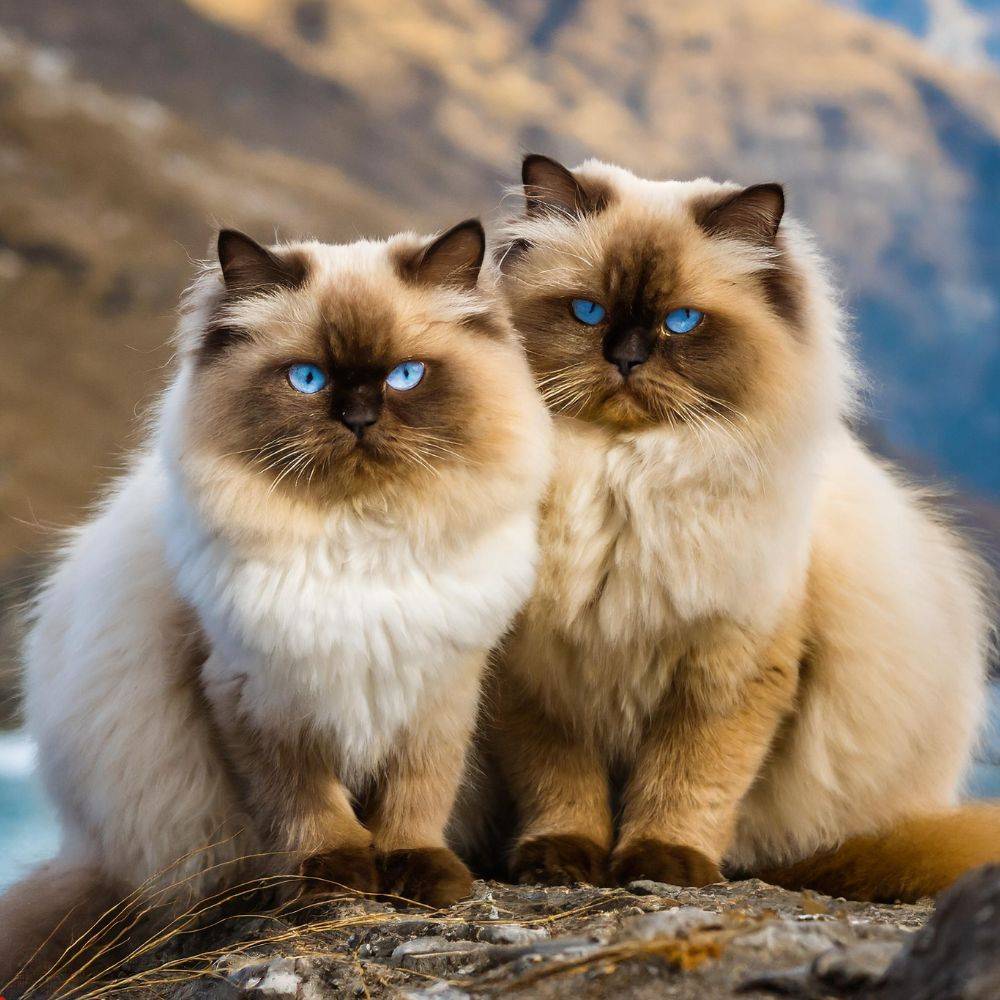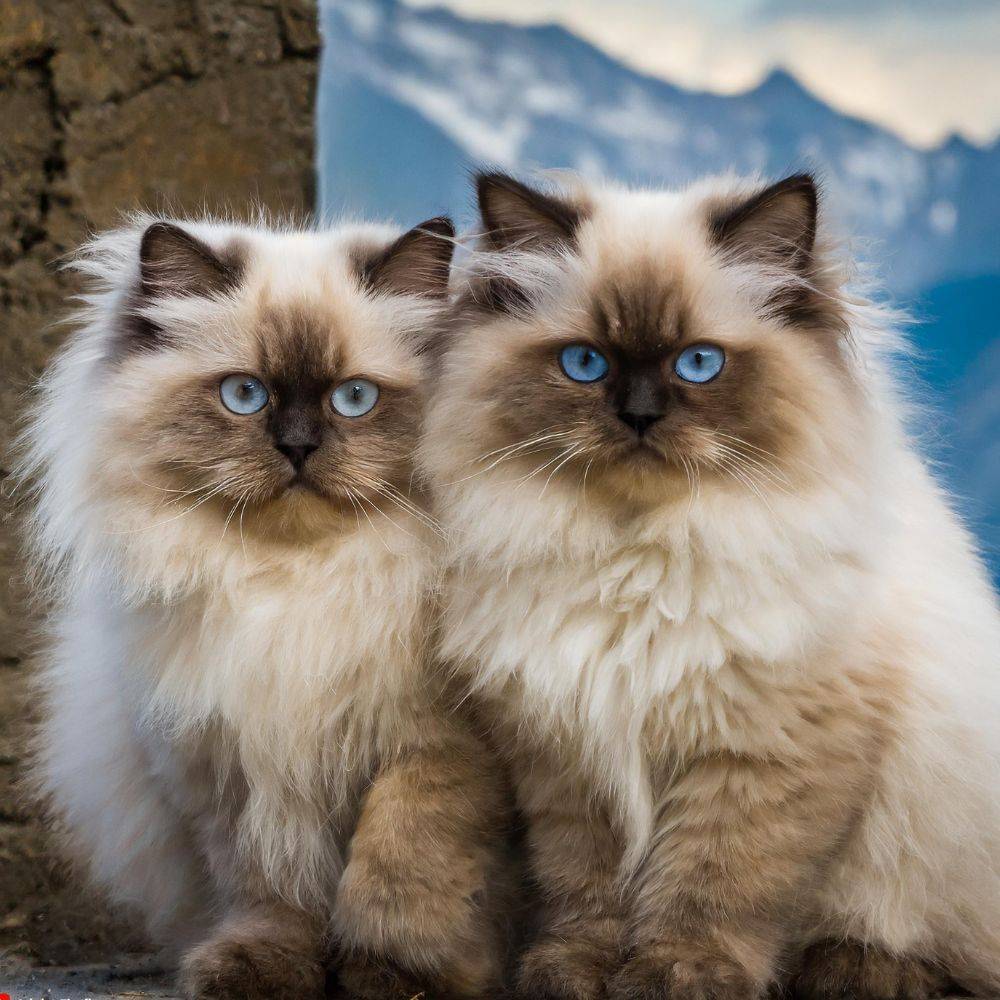Nurturing the Journey: Responsible Breeding of Himalayan Cats
Tue Apr 23 2024
Biterbite

embarking on the journey of breeding Himalayan cats is a rewarding yet intricate endeavor that requires careful consideration and responsible practices. In this comprehensive guide, we'll explore the essential aspects of breeding, which include the necessary care, potential challenges, and sensible answers to ensure the well-being of each breeding pair and their future kittens.
Things to Take Care of During the Breeding Process

Health Check-ups:
Importance: Regular health United States of America is vital for each the male and female Himalayan cats involved in breeding.
Benefits: Health screenings help identify potential genetic issues, ensure the overall well-being of the cats, and contribute to healthy offspring.
Proper Nutrition:
Importance: Providing proper vitamins is important for the health оf the breeding pair and the development of the kittens.
Recommendations: Consult with a veterinarian to determine the appropriate diet, together with unique nutrients essential for the breeding process.
environmental Comfort:
Importance: Create a comfortable and stress-free environment for the breeding pair.
Recommendations: Provide a quiet and secure space, far away from disturbances, where the cats can feel at ease throughout the breeding process and pregnancy.
Behavioral Observations:
Importance: Observe the behaviors of the breeding pair for symptoms of readiness and receptivity.
Recommendations: Look for behavioral cues including increased affection, vocalizations, and the female's acceptance of the male's advances.
Regular Period for the Breeding Process:

Heat Cycles in Females:
Frequency: Femаle Himalayan cats experience heat cycles approximately every 14 to 21 days.
Timing: Breeding is maximum effective at some stage in the female's heat cycle when she is receptive to mating.
Ideal Age for Breeding:
Consideration: Breeding is generally initiated after the female is at least one year old to ensure she is bodily mature and healthy.
Benefits: Waiting till the cat is at the ideal age contributes to the overall well-being of both the female and the kittens.
Breeding Seasons:
Characteristic: Unlike some animals, Himalayan cats do not now have particular breeding seasons.
Year-Round Possibility: Breeding can arise year-round, presenting flexibility for responsible breeders.
Specific Issues You Might Face During the Breeding Process:

Difficulty in Mating:
Issue: Sоme breeding pairs may additionally face challenges in the mating method, including issues in accomplishing successful copulation.
Solution: Consult with a veterinarian to determine potential underlying issues and explore assisted breeding techniques if necessary.
Complications During Pregnancy:
Issue: Pregnancies in cats can now and then come with complications, which include gestational troubles or difficulties in the course of hard work.
Solution: Regular veterinary United States of America at some stage in pregnancy can help detect and address potential complications early on. In instances of labor problems, immediate veterinary assistance is crucial.
Health Issues in Kittens:
Issue: Health problems may additionally arise in kittens, starting from genetic conditions to infections.
Solution: Responsible breeding practices, consisting of health screenings of the breeding pair, contribute to reducing the risk of genetic troubles. Prompt veterinary care is essential for addressing any fitness worries in kittens.
Stress-Related Concerns:
Issue: Stress can impact the breeding pair, affecting their overall well-being and potentially hindering the breeding process.
Solution: Create a calm and comfortable environment, minimize disruptions, and provide ample opportunities for relaxation to reduce stress levels.
Solutions to Address Potential Problems:

Professional Veterinary Guidance:
Solution: Regular consultations with a veterinarian are essential all through the breeding process.
Benefits: Veterinary guidance helps identify and address potential issues, ensuring the health and well-being of the breeding pair and their offspring.
Assisted Breeding Techniques:
Solution: In instances of issues in mating, assisted breeding techniques which include artificial insemination may be taken into consideration.
Benefits: Assisted techniques can increase the chances of successful mating and pregnancy.
Prenatal and Postnatal Care:
Solution: Prioritize prenatal and postnatal care for the female cat, such as regular check-ups at some stage in pregnancy and monitoring after giving birth.
Benefits: Comprehensive care helps detect and address any complications, contributing to the health of the mother and kittens.
Genetic Testing:
Solution: Incorporate genetic testing into the breeding application to identify potential hereditary situations.
Benefits: Genetic testing enables responsible breeding practices reducing the risk of passing on genetic disorders to the offspring.
Conclusion:
Breeding Himalayan cats is an adventure that demands careful attention, responsible practices, and a commitment to the well-being of the breeding pair and their kittens. Regular health check-ups, proper nutrients, and creating a comfortable environment are crucial elements of the breeding process. Addressing capacity challenges, together with trouble in mating or health troubles in kittens, requires a proactive technique with professional veterinary guidance and, when needed, assisted breeding techniques. By prioritizing the health, comfort, and genetic diversity of the cats involved, responsible breeders contribute to the betterment of the breed and the creation of happy, healthy feline families.





